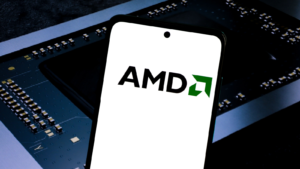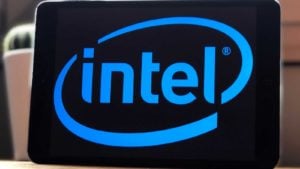
As great as top technology stocks were in 2023, it’s clear that 2024 will be the year for top-rated technology stocks. If you want to power your portfolio and beat the market, you must invest in tech.
Even though the Dow Jones Industrial Average is doing fine this year, up by more than 2% so far in 2024, that’s not good enough for investors. Not when there’s more money on the table in tech.
The tech-heavy Nasdaq composite outperformed the Dow last year, and is about three times higher so far in 2024.
So, if you’re just putting your money into an index fund that follows the Dow or the greater market, you’re selling yourself short.
Investing in top-rated technology stocks gives you the best opportunity for market-beating returns because tech companies, by nature, are working with new, innovative ideas that can change the world.
Many of the names on this list are deeply involved with artificial intelligence, which is the No. 1 catalyst in the stock market today. Your money needs to be in that game as well if you want to see market-beating returns.
The best way to find top-rated technology stocks is to use the Portfolio Grader, which is a free tool that evaluates stocks based on earnings and revenue growth, analyst sentiment, momentum and other factors.
The stocks on this list get top scores and are wise investments for anyone looking to enter the technology sector.
Advanced Micro Devices (AMD)

I’m expecting big things from Advanced Micro Devices (NASDAQ:AMD) this year.
While it’s far behind in the race to produce high-powered semiconductors that can power generative AI applications, AMD is now in the game with its MI300 processors.
Originally expected to bring in $2 billion to AMD’s coffers in 2024, AMD is now projecting $3.5 billion in revenue from its MI300 processors.
“Customer response to MI300 has been overwhelmingly positive, and we are aggressively ramping production to support the dozens of cloud, enterprise and supercomputing customers deploying Instinct accelerators,” CEO Lisa Su said.
AMD brought in $6.1 billion in revenue in the fourth quarter of 2023, up 10% from just a year ago. AMD stock is up 42% so far in 2024 and gets an “A” rating in the Portfolio Grader.
Look for the MI300 sales to start beefing that number up as 2024 rolls on.
Nvidia (NVDA)

Nvidia (NASDAQ:NVDA) was the best-performing stock in the S&P 500 in 2023, gaining 239%. It so far it holds the No. 1 spot in 2024, with a gain of nearly 60% year to date.
Nvidia’s dominant role in generative AI semiconductors is the reason behind the company’s dominance. Nvidia produces between 80% and 90% of the chips needed for generative AI today.
Its H200 chip rolling out now has 1.4x more memory bandwidth and 1.8x more memory capacity than the H100 chip that dominated 2023.
This amazing growth is reflected in Nvidia’s revenue, which in the fiscal fourth quarter of 2024 was $22.1 billion, up 265% from a year ago. For the full fiscal year 2024, Nvidia had $60.9 billion in revenue, up 126% from a year ago.
Now with a market cap of more than $2.1 trillion, Nvidia is the third-most valuable company in the world. Extraordinary. NVDA stock gets an “A” rating in the Portfolio Grader.
Palantir Technologies (PLTR)

Palantir Technologies (NASDAQ:PLTR) is also seeing dynamic growth thanks to its use of generative AI.
Palantir made its reputation as a military contractor that uses AI to provide real-time analysis for defense and intelligence agencies.
But what I’m really excited about is Palantir’s expansion in the commercial space. By making its Foundry platform accessible to companies to provide insights and analysis, Palantir opens up a potentially huge revenue stream.
Not only that, but its new Artificial Intelligence Platform, or AIP, can be used for both defense customers and commercial clients.
Revenue from commercial clients grew 32% in the fourth quarter of 2023, to $284 million, while government revenue was up 5% to $324 million.
I wouldn’t be surprised if commercial revenue at some point exceeds the government side, although Palantir is still aggressive in securing business from its government clients.
PLTR stock is up 52% in 2024 and gets an “A” rating in the Portfolio Grader.
Microsoft (MSFT)

We already met the third-biggest company by market cap in the world. Now we’re at the No. 1 company in Microsoft (NASDAQ:MSFT), which now boasts a cap of more than $3 trillion.
Microsoft’s growth as of late is related to its early adoption of generative AI and its $13 billion investment in OpenAI, the creator of ChatGPT that showed the world how generative AI could revolutionize many day-to-day activities.
Microsoft incorporated AI into its Office 365 platform, its Bing search engine, its Edge browser and other products. It’s also adding AI features to existing Windows apps and into Microsoft Copilot for Finance.
Revenue in the second quarter of fiscal 2024 was $62 billion, up 18% from a year ago.
DA Davidson analyst Gil Luria believes that Microsoft has plenty of more room to run, setting at $500 price target that’s a 23% increase from its current price. That looks to be a good bet.
MSFT stock is up 57% in the last 12 months. It gets an “A” rating in the Portfolio Grader.
Intel (INTC)

Intel (NASDAQ:INTC) is a chip maker with a long track record dating back over 50 years.
But management is well aware that this is no time to be resting on its laurels, not with something as dynamic as AI changing the calculus for technology companies large and small.
Intel Senior Vice President Sachin Katti says that Intel wants to “bring AI everywhere.” The company is rolling out its Edge platform that is designed to help customers more easily develop, deploy and manage AI applications.
The company has some work to do. Intel stock is up 70% in the last year, but it hasn’t seen some of the explosive growth that other tech companies enjoyed. The stock is even down 12% in 2024.
Earnings for the fourth quarter were solid but not spectacular. Revenue was $15.4 billion, up 10% over last year. But full-year revenue of $54.2 billion was down 14% from 2022.
INTC needs to push harder on its AI message. For now, it has a “B” rating in the Portfolio Grader.
Alphabet (GOOG)

Alphabet (NASDAQ:GOOG, NASDAQ:GOOGL) is actually seeing some backlash as of late.
The parent company of Google and YouTube saw its launch of the Bard AI chatbot fail. And now it rebranded as Gemini a more powerful generative AI chatbot, is being accused of bias. The controversy is prompting the company to relaunch its Gemini AI image generator.
So we’re in a situation now where GOOG stock is actually down 3% in 2024. Even though it still has shown a gain of 42% in the last year, one could view the underperformance so far this year as an opportunity to purchase a blue-chip tech stock at a discount.
Revenue in the fourth quarter was $86.3 billion, up 13% from a year ago. Net income of $20.6 billion was an improvement from $13.6 billion in the fourth quarter of 2022. And the company’s operating margin improved from 24% to 27%.
I’m still liking GOOG here. But for now, it only has a “B” rating in the Portfolio Grader.
Meta Platforms (META)

Meta Platforms (NASDAQ:META) is looking pretty good these days as well.
The social media company, which has dominant platforms in Instagram and Facebook, is up 40% so far this year.
A lot of that ground was gained in February when Meta reported outstanding earnings for the fourth quarter of 2024. Meta posted revenue of $40.1 billion, up 25% from a year ago.
Advertising revenue led the charge, rising from $31.2 billion last year to $38.7 billion in Q4 2023.
Meta also announced its first-ever quarterly dividend of 50 cents per share. Coupled with plans to repurchase $80 billion in META stock, the company is doing a great job of taking care of its shareholders.
Meta is also embracing the AI trend, with plans to allow users to edit or create images in Instagram with new AI editing tools. The company is also launching Meta AI for WhatsApp, Messenger and Instagram as a conversational assistant to generate realistic images.
The company looks primed for a great 2024. META gets an “A” rating in the Portfolio Grader.
On the date of publication, Louis Navellier had long positions in NVDA, PLTR and MSFT. Louis Navellier did not have (either directly or indirectly) any other positions in the securities mentioned in this article.
The InvestorPlace Research Staff member primarily responsible for this article had long positions in NVDA and PLTR. The staff member did not hold (either directly or indirectly) any other positions in the securities mentioned in this article.






